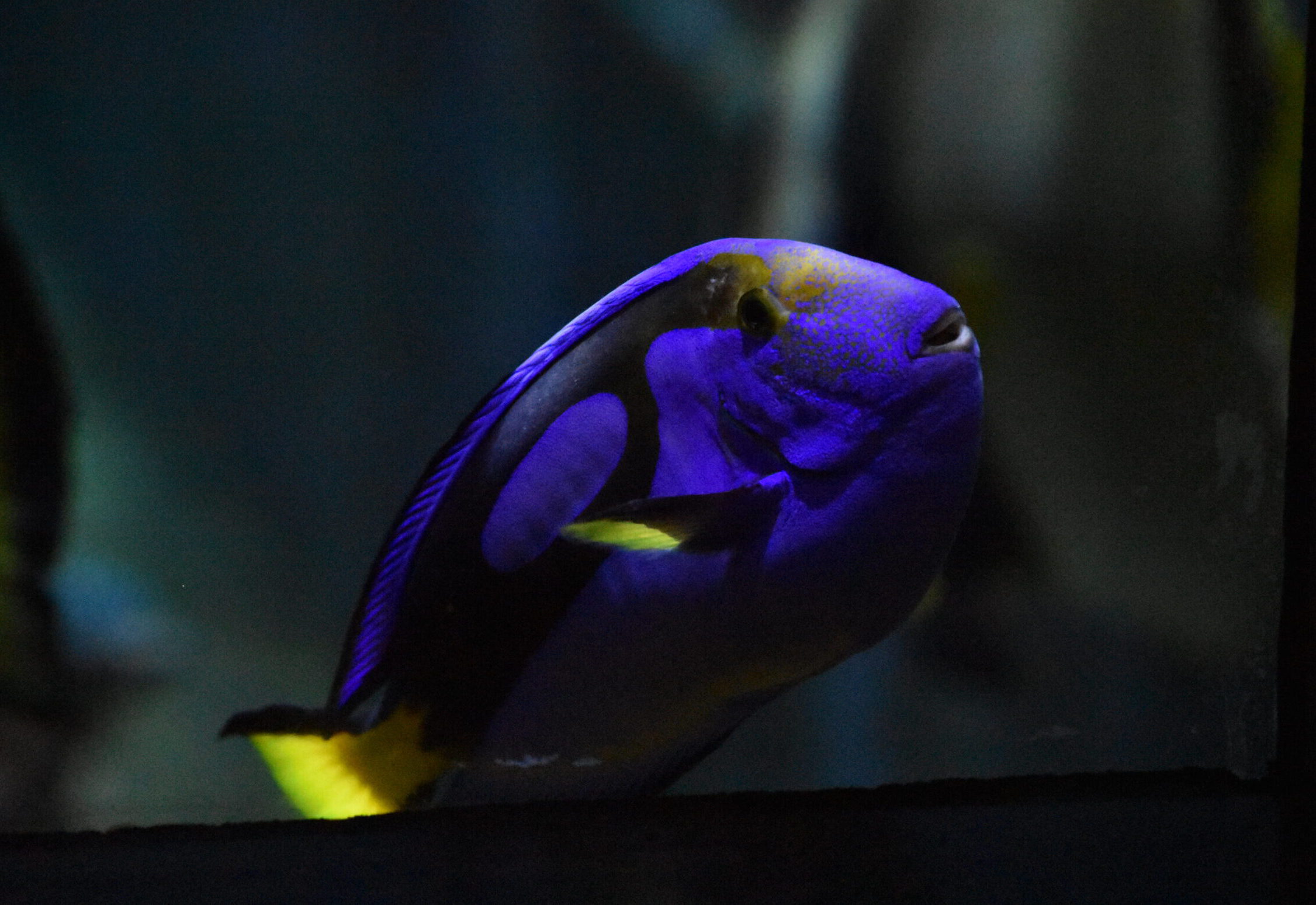Because of their algae-centric diet, the blue surgeon tang plays an important role in keep algae growth under control. They will often pull fast-growing algae from ocean sponges, something that benefits their health.
I LIVE IN THE INDO-PACIFIC OCEAN
The blue surgeon tang is native to the Indian and Pacific Oceans. This fish species is most often be found on coastal regions with coral reefs in tropical and sub-tropical waters.
I AM A HERBIVORE
Unlike other surgeon fish whose diets consist mostly of plankton, the blue surgeon tang likes to graze on algae. They will use their small mouths to forage along rocks and coral on the ocean floor pulling algae off with their teeth.
BLUE SURGEON TANGS ARE SOCIAL
The blue surgeon tang will sometimes prefers their own space, however, they are most often found in pairs or small schools for extra protection from predators.
TRANSPARENT TRICK
Blue surgeon tangs are always on the move, only resting at night. When faced with danger or dark spaces, blue tangs can make themselves semi-transparent in order to hide from predators.
HELPING THE BLUE SURGEON TANG IN THE WILD
By visiting the Fort Wayne Children’s Zoo, you are supporting local, regional, and global conservation. A portion of every ticket sold goes towards conservation of wildlife and wild places. Each year, the Fort Wayne Children’s Zoo donates over $250,000 to our conservation partners.

